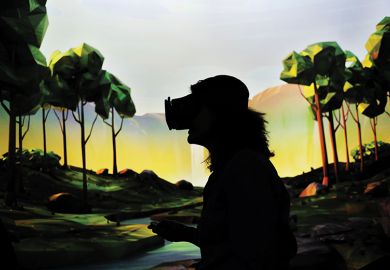Headlines in the UK and elsewhere suggest that during the pandemic students wanted to get back to pre-pandemic face-to-face lectures, seminars and labs as soon as possible. That has now happened. But even if it is what students thought they wanted, is face-to-face always the most effective method of teaching and learning? And isn’t that, ultimately, the most important issue?
Our Differing Perceptions of Quality of Learning survey, completed by 835 first- and second-year UK undergraduates in May, shows marked differences in perceptions and experiences between different ethnic groups in the context of Covid.
It is true that the majority in all ethnicity groups said at the time – when teaching was still largely being carried out online-only – that they preferred face-to-face teaching. The proportions only ranged from 64 per cent of white respondents to 58 per cent of both black, Chinese and Indian students. Nor was there much appetite for online-only learning. Only 22 per cent of white students had a preference for it, dropping to 20 per cent for Bangladeshi, Pakistani and other Asian students, and rising only slightly for Chinese and Indian students (26 per cent) and black students (28 per cent). Yet a full 45 per cent of Arab students preferred online-only studying.
Moreover, there was evidence that flipped learning was actually the most desired teaching format across all student groups, including all three of the subject areas from which they were drawn – even if they did not necessarily recognise that preference. I say that because 73 per cent of respondents regarded the recording of teaching materials as the most valuable element of teaching at that time. And they highlighted the importance of engaging with these and other online resources before attending sense-making sessions with peers. There was a general consensus that quality learning should be interactive, both in terms of staff-student interaction and students being given interactive tasks to reinforce their learning.
However, the picture is complicated. Several previous studies report that students enjoy being able to learn at their own pace and that they prefer flipped classroom over traditional approaches. However, a fundamental issue is they are not being given sufficient understanding of how valuable that approach is, which leads them to reject it even when they embrace the principles on which it is based. This was borne out in our project, too, White participants, in particular, were largely unhappy with a flipped approach as part of blended learning, which they saw as leaving them to do too much learning on their own. BAME students were generally happier with it, and more prepared to put in the work outside face-to-face sessions.
The UK’s National Student Survey typically shows lower satisfaction rates among BAME students compared with their white counterparts, but our project suggests that during the pandemic situation this situation was reversed. White and mixed-heritage students had the lowest overall satisfaction with teaching and learning (32 per cent in each case), while Arab students had the highest (57 per cent).
Academics often struggle to do what is best for students’ education while also keeping them satisfied. For example, students participating in this project valued their experience of formal tasks and activities with other students less than other ways of learning, but this does not mean that formal group-learning practices do not have pedagogic value. Nor does it mean we should abandon them.
Our study showed that students are dissatisfied when their expectations are not met, but we need to ensure that they develop into independent learners. Maybe the lesson is that while we should aim to keep students satisfied and appreciate their constructive feedback, we also need to better articulate the pedagogic reasoning behind our approaches to teaching and show them how they can help themselves to learn.
Pedagogy must account for different groups of students’ requirements, but also be evidence-based and evidence-informed. It is not practical for courses to be (re)designed to meet the learning preferences of one group over another; teaching approaches should be inclusive by design, to support all students. But we should take opportunities to allow different groups to play to their strengths. Thus, a course with a high number of Arab students could reflect their preference for teaching approaches that make considerable use of online resources, for instance. And other universities should consider using or adapting the open access survey tool we developed for this project to review their courses for inclusive practice.
But we should be careful about pandering to students’ unanalysed learning preferences. Surely, as universities, we should push the boundaries of learning and teaching in line with the emerging evidence of what is effective. Few industries would ignore their pandemic learning to go back to how things were 20 months ago. Why would higher education revert to pre-pandemic approaches just because national surveys (which are mainly representative of white students) say that this is what students think they want?
Harriet Dunbar-Morris is dean of learning and teaching, and reader in higher education at the University of Portsmouth. Differing Perceptions of Quality of Learning, funded by the Quality Assurance Agency, was delivered in collaboration with Manchester Metropolitan University, Solent University and the University of Nottingham.
Register to continue
Why register?
- Registration is free and only takes a moment
- Once registered, you can read 3 articles a month
- Sign up for our newsletter
Subscribe
Or subscribe for unlimited access to:
- Unlimited access to news, views, insights & reviews
- Digital editions
- Digital access to THE’s university and college rankings analysis
Already registered or a current subscriber? Login








